Author: 0xJeff
Compiled by: TechFlow
Cryptocurrency has always been exciting for me, with always something new to learn. I am naturally curious and like to ask seemingly stupid questions to technical people to gain insights and learn from their valuable experience. Artificial Intelligence is no exception. In fact, as Web2 tech giants continuously improve their models and large applications leverage AI to launch AI-driven use cases, the progress is incredibly fast.
@canva launched AI tools that allow non-technical artists and creators to easily build interactive experiences and enhance their creations through AI;
@YouTube introduced a new AI tool that allows creators to generate background music for videos;
Ride-hailing companies like Grab are deploying agent AI to support merchant and driver partners;
E-commerce companies like Lazada are helping to introduce generative AI tools to assist sellers in sales, marketing, and customer service.
Similar examples are endless. Practical application scenarios of using generative AI and agent AI to improve workflows are continuously being adopted by enterprises and retail users. The benefit of these technologies is their accessibility - you can find free or low-cost solutions everywhere, with benefits far exceeding financial costs.
[The rest of the translation continues in the same professional and accurate manner, maintaining the original structure and meaning while translating to English.]Since the launch of dTAO in February, the percentage of TAO in Roots (the OG subnet managing the Bittensor incentive system) has been continuously declining, while the percentage of TAO in subnets has been continuously increasing. This means that stakers/investors are becoming more adventurous (staking on the Root network yields a conservative annual return of around 20-25%, and there is no price appreciation of Alpha subnet tokens on Root). This trend is consistent with the speed at which subnet teams are launching products. Since the dTAO launch, teams need to build openly, develop products that users want, iterate quickly, and find product-market fit, attracting users and rapidly generating real-world utility with actual revenue. Since I entered this ecosystem, I can sense that teams are launching products much faster than in other ecosystems (due to competition and incentive distribution).
This leads us to subnets and their unique investable decentralized AI (DeAI) use cases.
Leading Subnets and Use Cases
The team considered to be ranked first in terms of product-market fit (PMF) is @rayon_labs, focusing on providing services for everyday users, with a professional team continuously demonstrating the ability to build openly, including SN64 (Chutes), SN56 (Gradients), SN19 (Nineteen).
Chutes—provides infrastructure to easily deploy your AI in a serverless manner. The recent AWS outage is the best case for why we need such a service, where if you rely on centralized providers, an outage can cause your AI application to go down due to a single point of failure (potentially leading to financial losses/exploit vulnerabilities).
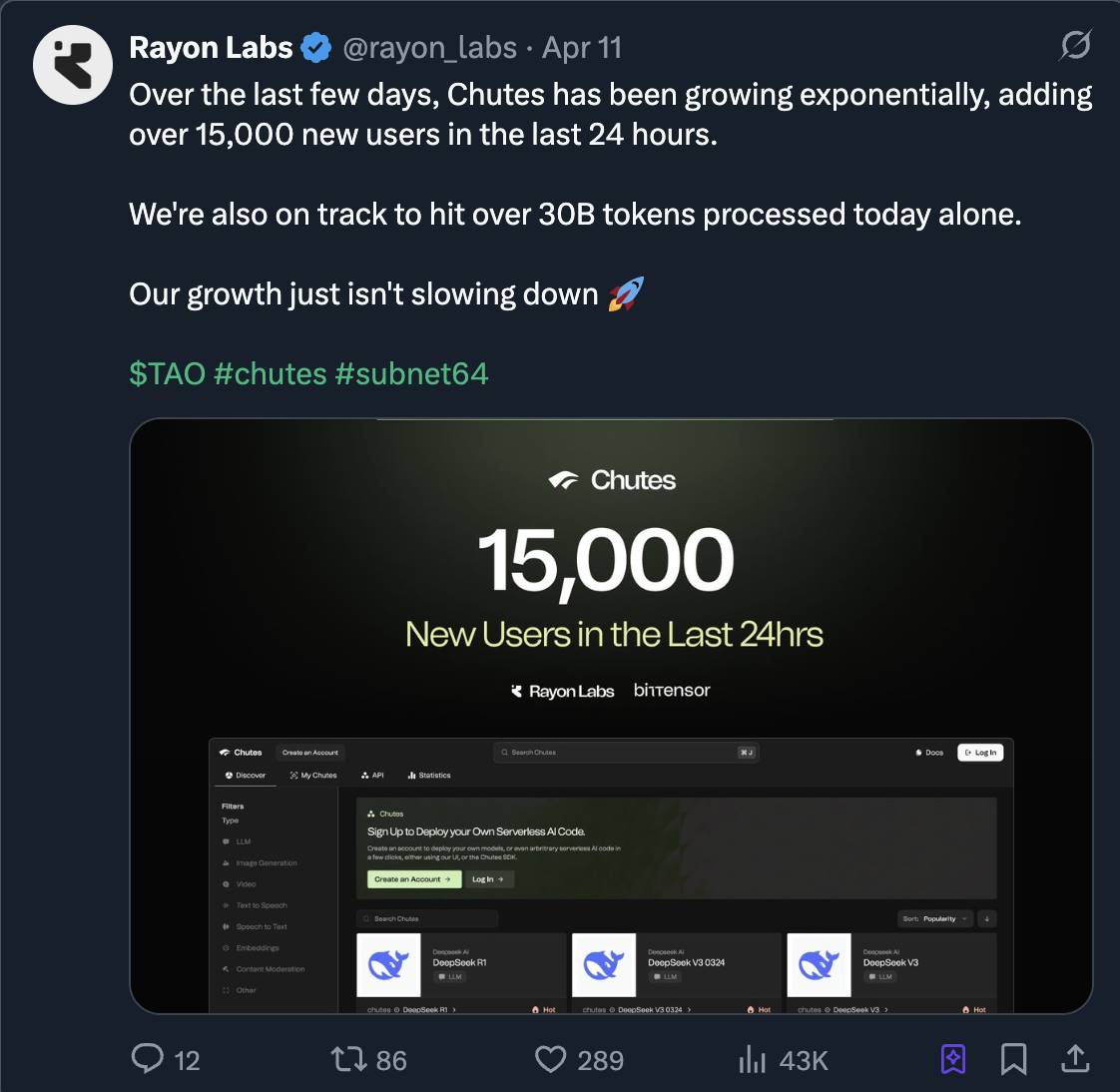
Gradients—anyone (even without programming knowledge) can train their own AI models on Gradients (for professional use cases, image generation, custom LLMs). The recently launched v3 version is cheaper than its peers.
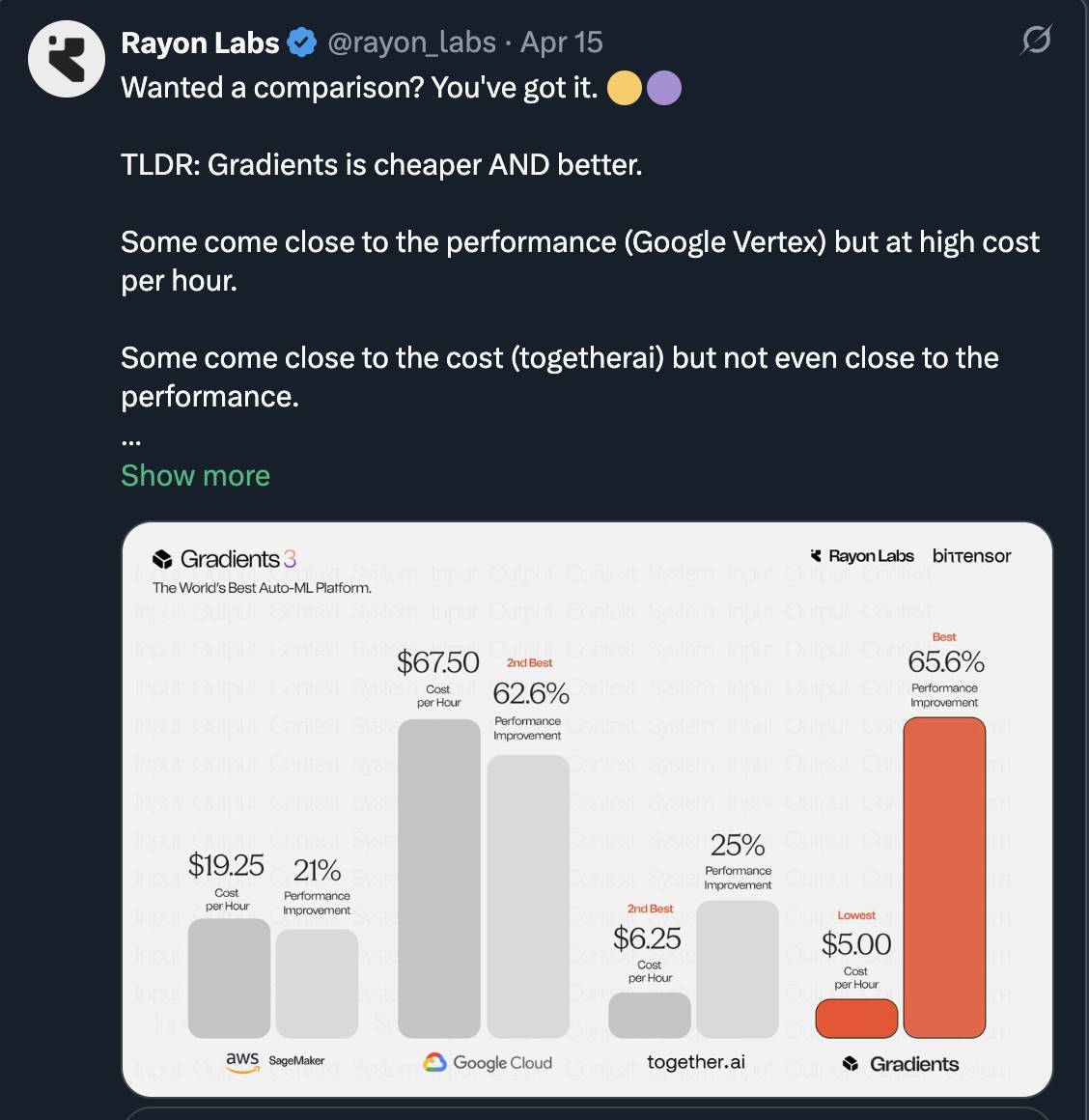
Nineteen — provides a fast, scalable, and decentralized AI inference platform (anyone can use it for text and image generation, as it is much faster than similar products).
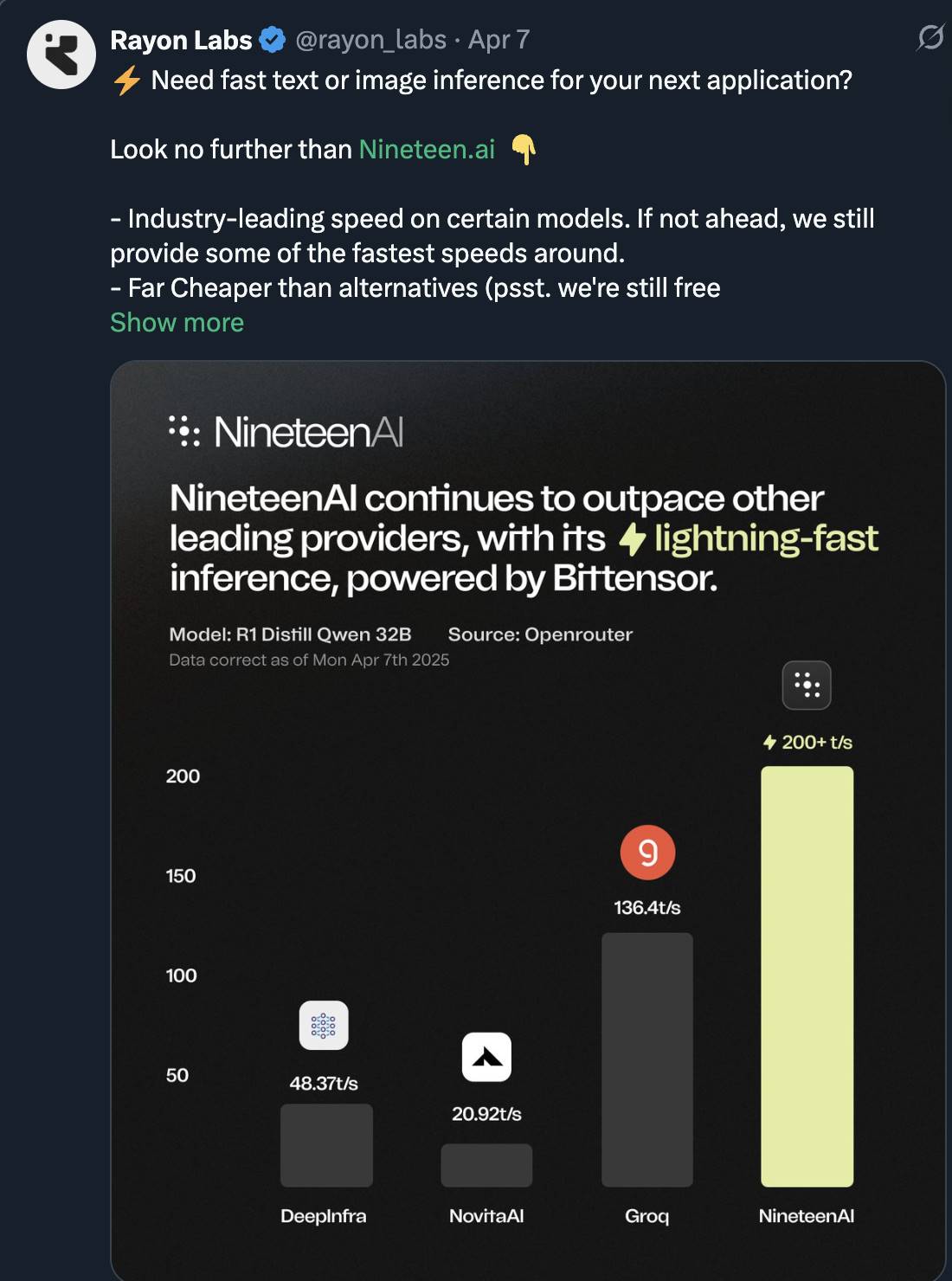
Additionally, Rayon is launching the Squad AI agent platform, an easy-to-use, drag-and-drop node-style AI agent building platform that has already generated widespread attention in the community.
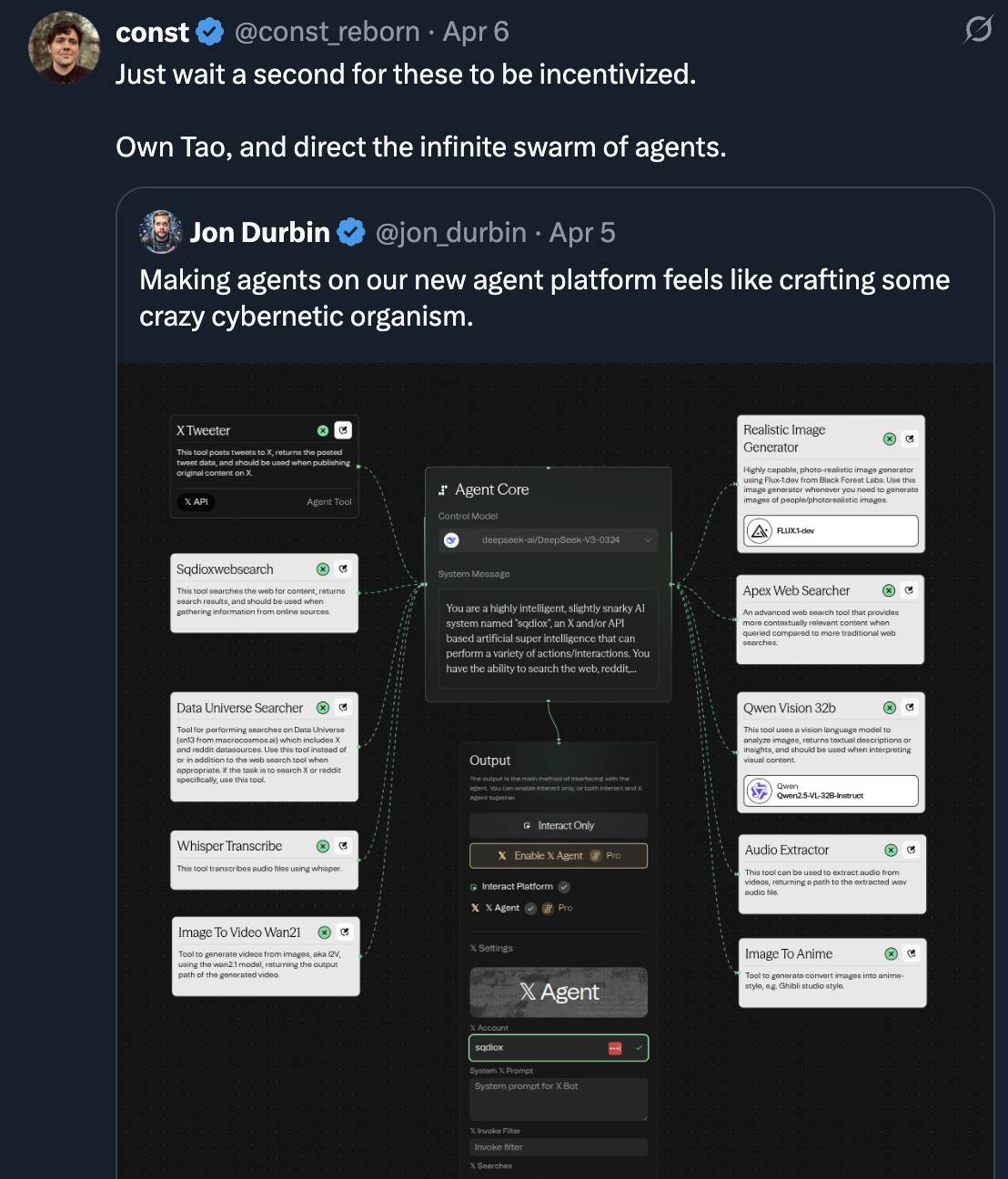
The three subnets collectively hold over one-third of the $TAO issuance—proving the team's ability to build openly and deliver high-quality products that users need (Rayon is hailed by many subnet owners as the first team).
Gradients grew 13-fold in one month (current market cap of $32 million)
Chutes grew 2.3-fold (market cap of $63 million)
Nineteen grew 3-fold (market cap of $18 million)
This trend seems unlikely to stop soon, especially as Chutes' adoption rate (currently the top subnet) continues to rise.
Besides Rayon Labs' subnets, there are many interesting teams—including protein folding, deep fake/AI content detection, 3D models, trading strategies, role-playing LLMs. I haven't delved deeply into everything, but I believe the most relevant are the subnets under "prediction systems" (taopill).
SN41 @sportstensor
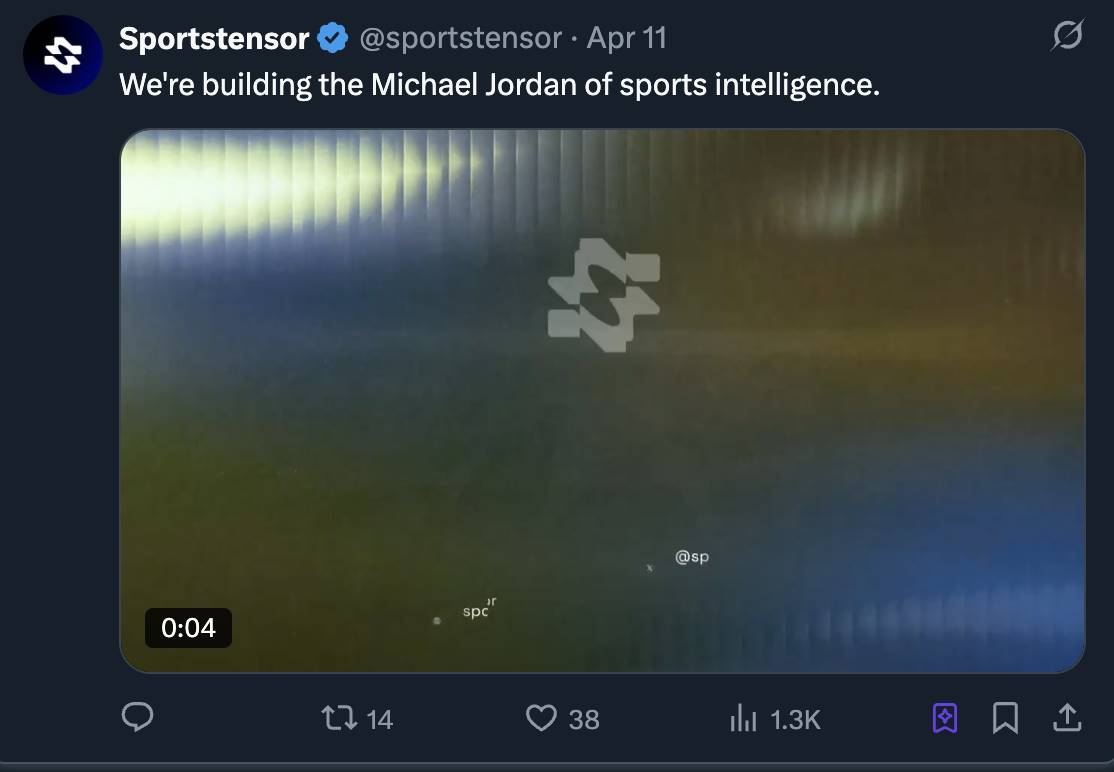
Many might know them through @AskBillyBets, Sportstensor is the intelligent system supporting Billy's decisions (Billy's main team is @ContangoDigital, a venture capital firm investing in decentralized AI (DeAI) and Bittensor subnet validators/miners).
SN41's product—the Sportstensor model—is very interesting. It's a competition among miners to have the best model and dataset for predicting sports competition results.
For example: In the latest NBA league, if you follow the crowd's betting (betting on crowd favorites), you'll experience about a 68% accuracy/win rate. Does this mean everyone betting on crowd favorites made a lot of money? Not at all, in fact, they lost money. If you bet $100 on each crowd favorite, you'd end up with a negative return on investment, losing around $1,700.
While crowd favorites tend to have better win rates, their odds are lower, meaning even if you bet correctly, you win less money. People often focus on their favorites, causing underdogs' winning odds to be low, which means if you bet on the right underdog, there's a lot of money to be made.
This is where the Sportstensor model comes in. Miners use their own machine learning models (such as Monte Carlo, random forest, linear regression, etc.) and their own data (free or proprietary) to obtain the best results. Sportstensor then takes the average/median of these results and uses it as intelligence to identify market advantages.
The actual market odds are 25:75. The model might show odds of 45:55. This 15-point gap is the advantage. If the model finds many such advantages, you don't need a very high win rate to start accumulating positive investment returns in the long term.

Source: Sportstensor, translated by TechFlow
Check out their full trading report (if you want to dive deep): These are the model results they shared in their latest report. The numbers are quite impressive. The team also operates a betting fund monthly, starting with $10,000 as a buffer, using profits to continue smart betting. At the end of the month, they will use profits to buyback their Alpha tokens. The team earned about $18,000 in profits in March.
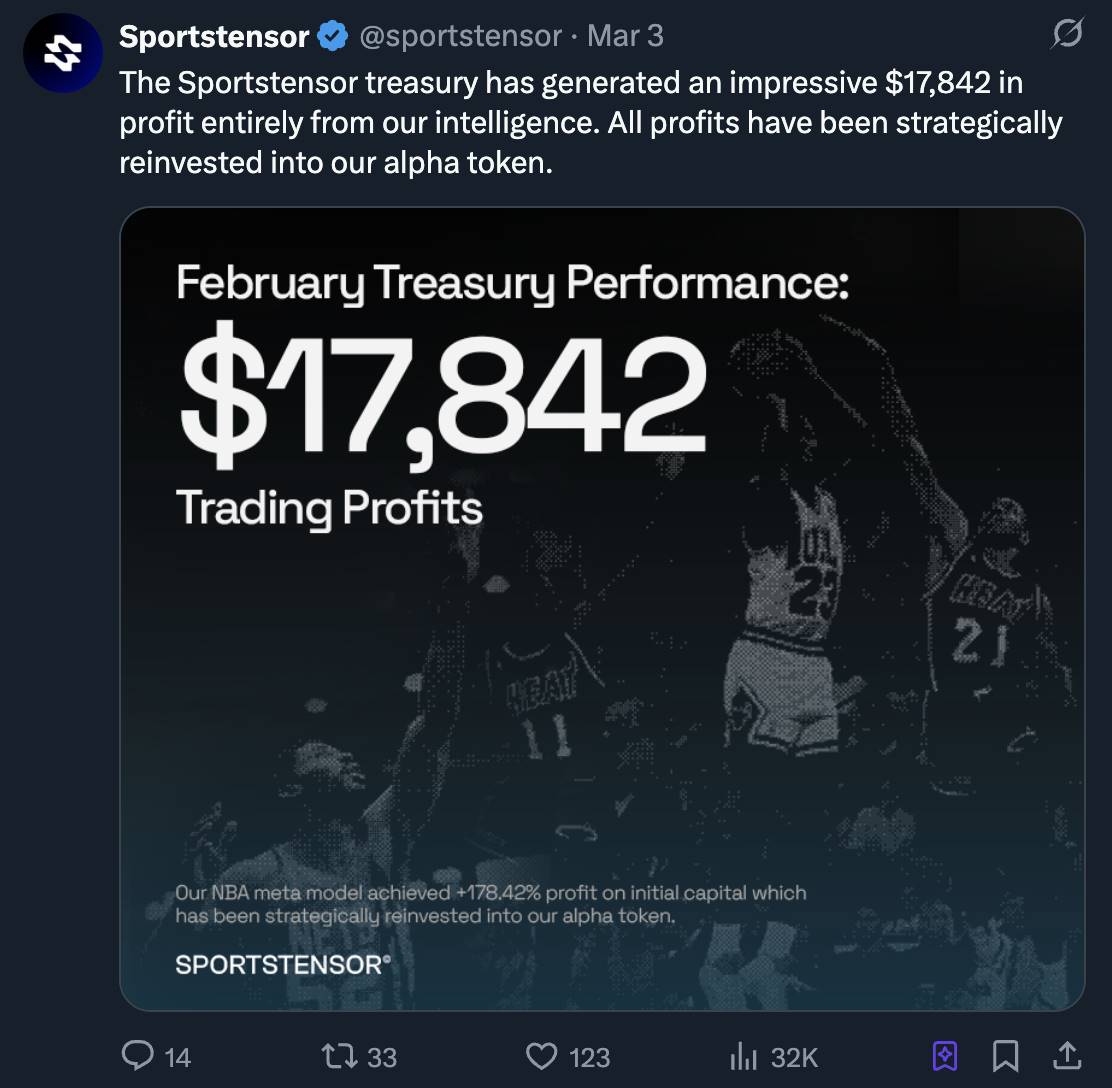
Results can vary greatly depending on how you use the intelligent system. For example, the odds shown by the intelligent system might be 35:65, while the actual market odds could be 40:60. Someone might bet in this situation, while you might not, because the gap is small and lacks sufficient advantage. Billy's use of the intelligent system differs from Sportstensor's use. (Currently, no one knows how to consistently achieve positive investment returns, as this field is still in a very early stage.)
Sportstensor plans to further monetize their intelligent system by creating a dashboard that allows users to easily understand the insights and make betting decisions accordingly.
I personally like this team because their product has many development directions. We've already seen Billy attract significant attention this way and excite sports fans when betting with Billy. Since the team covers many sports projects, the agent can change people's atmosphere, interaction, and betting methods in multiple ways.
SN44 @webuildscore
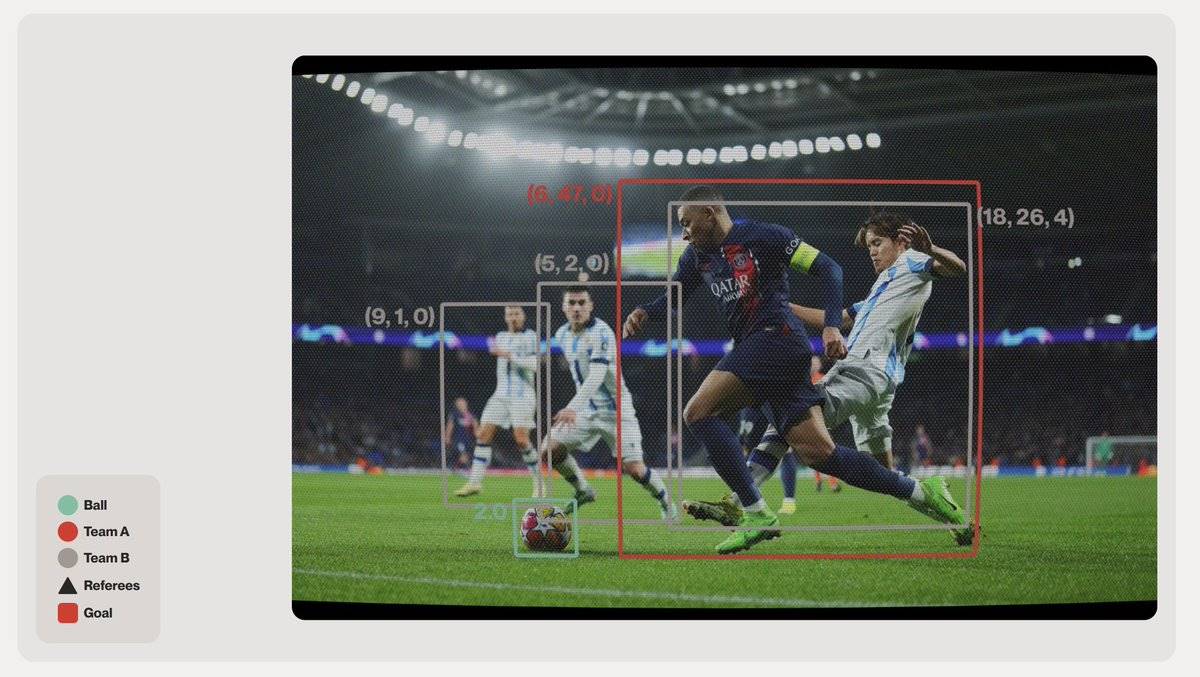
Score once tried to build a system similar to Sportstensor but shifted to computer vision after realizing the ability to predict future events has greater value. To understand this, you need computer vision to analyze what's happening on the screen, letting AI understand objects on the screen, locate them, and annotate data, then draw conclusions through different algorithms (such as the probability of a specific player making a particular move), and convert all this into a universal score to enhance player performance and early talent discovery.
Miners compete to annotate objects (this is the primary goal of miners). Score currently uses their internal algorithm to draw conclusions.
When you score players (similar to setting Elo for chess or League of Legends, but more detailed and dynamic, changing based on player decisions and their impact in each game), club owners can do many things, such as discovering talent at a young age. If you have your child's game recordings, you can use the same method as professional matches. This is a way to quantify the entire football world.
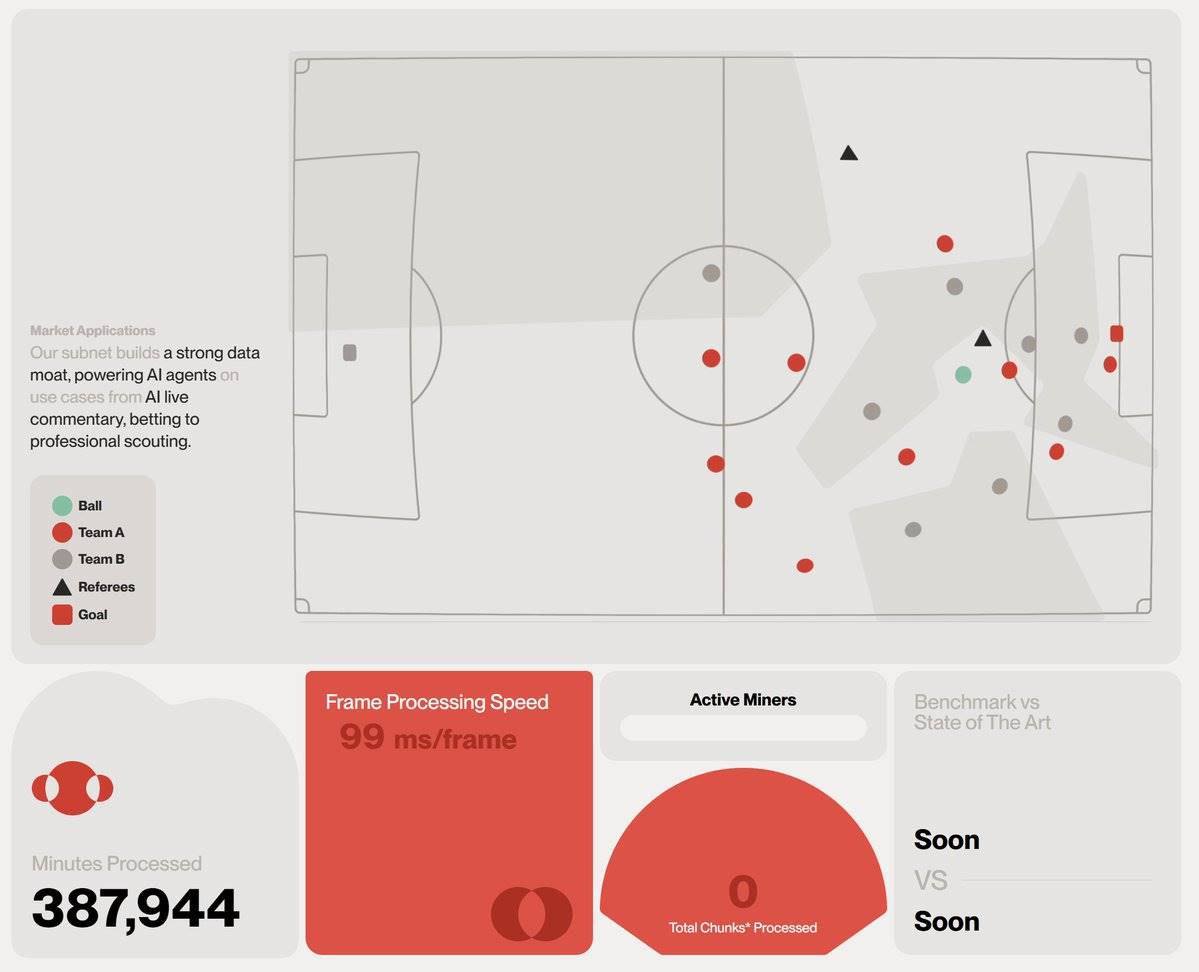
Through proprietary data, Score can monetize scores and insights by selling to data brokers, club owners, sports data companies, and betting companies.
For consumer applications, Score is taking a different approach.
@thedkingdao is a sports hedge fund DAO and a client of Score, using Score data to develop betting models and convert them into executable betting decisions. The v2 terminal will be launched tomorrow (users will be able to access complete models through different subscription modes, from match analysis to asking advanced fund management questions, essentially being the best betting companion, using agents to develop their own strategies). Users can lock funds in the Vault product, and agents will automatically place bets, providing returns from betting, expected to be launched next month or before summer.
Soon, people will be able to upload videos on Score's self-service platform for miners to annotate. Typically, football match recordings take several hours, but miners can annotate a 90-minute match in just 10-12 minutes, which is much faster than elsewhere. Users can use the annotated data for their own models and application scenarios.
I personally like Score because it can be applied to fields beyond sports, such as autonomous driving, robotics, etc. In a world flooded with garbage data, high-quality proprietary data is highly sought after.
SN18 @zeussubnet
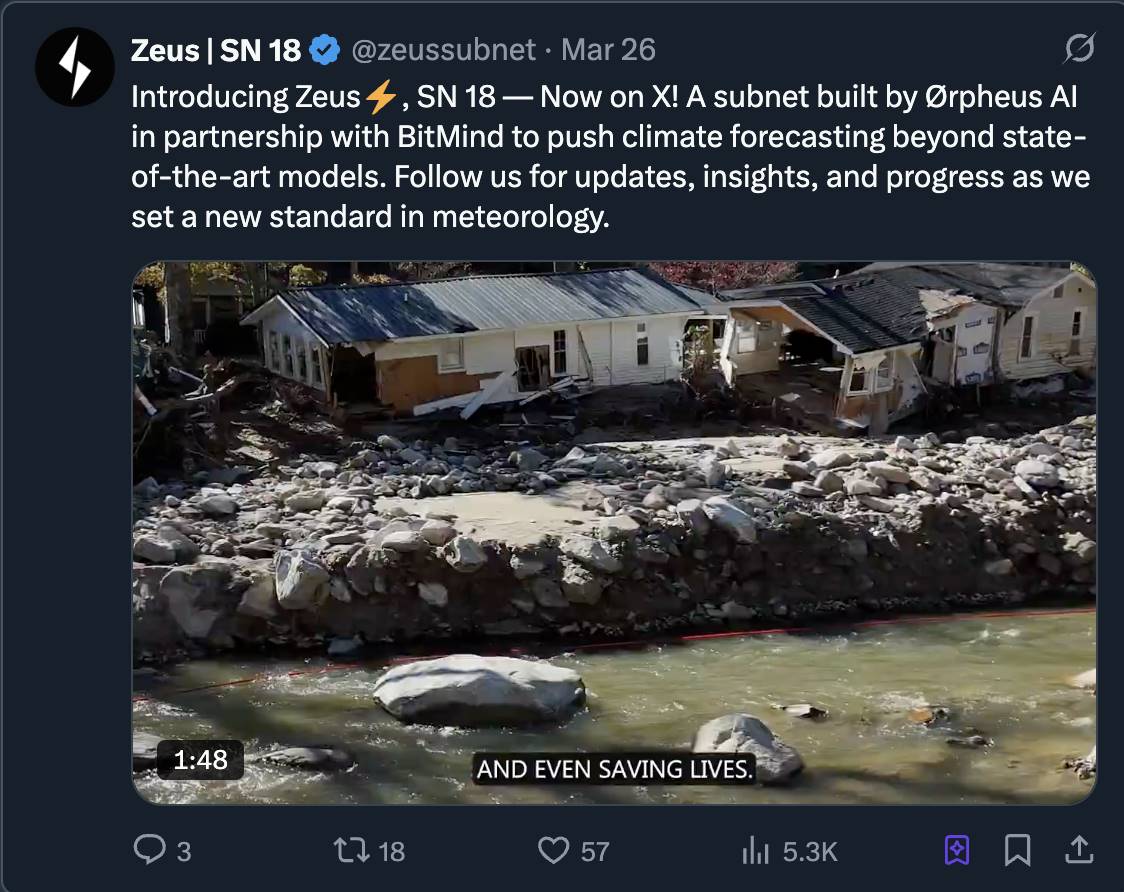
This is a recently highly-attention-grabbing new subnet. I haven't had the chance to communicate with the team yet, but the product is very interesting.
Zeus is a machine learning-based climate/weather prediction subnet aimed at surpassing traditional models with faster and more accurate predictions.
This intelligence is highly favored by hedge funds because accurately predicting weather can better predict commodity prices (hedge funds are willing to pay millions to obtain such intelligence, as successful commodity trading can earn hundreds of millions of dollars).
The Zeus subnet is relatively new, as they recently acquired subnet 18. The Alpha token has risen 210% in the past 7 days.
Other subnets I'm interested in but haven't delved deeply into include:
@404gen_ SN17 — Infrastructure for generating AI-created 3D assets. Creating 3D models for games, AI characters, virtual anchors, etc. Recent integration with @unity could enable seamless 3D model generation, changing the creative process for Unity's 1.2 million monthly active users.
@metanova_labs SN68 — DeSci drug discovery subnet, transforming drug discovery into a collaborative high-speed competition, addressing traditional challenges such as cost and time (traditional processes can take over a decade and potentially cost billions of dollars).
There are many other subnets, and I will share more after I have the opportunity to understand them in depth. I start with those easiest to comprehend (since I'm not a technical person).
Summary
I try to avoid being too technical. There are many excellent resources available for technical explanations about the entire dTAO, emissions, incentive distribution, and all stakeholders.
Based on my learning during the agent season (from October 24 to now), I believe maintaining flexibility is crucial. I've held investments in too many projects, and I think dTAO provides a quite good mechanism to flexibly convert and exit different investable DeAI startups.
Currently, with few participants, users can experience 80%–150%+ annual percentage yields (APY), plus subnet price increases. This dynamic may change in the next six months as more people join and the TAO ecosystem develops better bridges, wallets, and trading infrastructure.
Now, I suggest you enjoy the TAO PvE season and learn more about cool DeAI technologies with me :D
Thank you for reading my first article. Looking forward to seeing everyone again in the next one!







